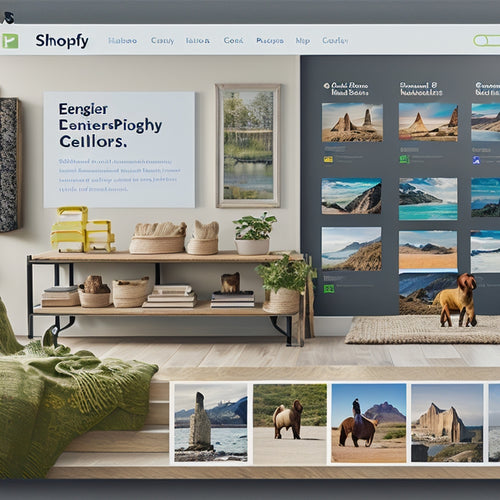
Shipping: The Engine Driving Business Growth
Share
You're recognizing that optimized shipping strategies can increase customer loyalty by up to 80%, driving business growth and setting your brand apart in a crowded market. By prioritizing customer satisfaction through tailored delivery options, you can reap significant benefits in customer loyalty and retention. Streamlining processes and optimizing supply chain management can help you overcome shipping complexities. As you adapt to shifting expectations of online shoppers, you'll reveal new opportunities for business growth. Now, explore the trends redefining e-commerce shipping and discover how to reveal your full growth potential.
Key Takeaways
• Recognizing shipping as a growth engine enables businesses to access full growth potential and reap significant benefits in customer loyalty and retention.
• Adopting shipping strategies that prioritize customer satisfaction establishes a strong reputation in the market and drives business growth.
• Optimizing supply chain management through streamlining processes and automation reduces the risk of errors and delays, leading to increased customer satisfaction.
• Offering tailored delivery options, expedited shipping services, and real-time tracking updates helps meet evolving customer demands and drives business growth.
• Embracing sustainable practices, last mile innovations, and data-driven optimization in shipping operations redefines the e-commerce shipping landscape and fuels business growth.
Unlocking Business Growth Potential
By recognizing shipping as a growth engine rather than just a cost center, businesses can access their full growth potential and reap significant benefits regarding customer loyalty and retention.
You can reveal new growth opportunities by adopting shipping strategies that prioritize customer satisfaction and convenience. This mindset shift enables you to focus on creating a seamless shipping experience that drives customer loyalty and retention.
By doing so, you'll be able to differentiate your business from competitors and establish a strong reputation in the market.
With the right shipping strategies in place, you'll be well-positioned to capitalize on new growth opportunities and take your business to the next level.
Pandemic's Lasting Impact on E-commerce
As the pandemic's grip on the world slowly loosens, it's clear that e-commerce has undergone a permanent change, with US sales surging markedly during the crisis. You've likely noticed changes in your own online shopping habits, and you're not alone.
The pandemic has altered online consumer behavior, with many consumers turning to e-commerce for the first time. This shift has put pressure on supply chain management, as businesses struggle to keep up with increased demand.
Here are three key takeaways from the pandemic's impact on e-commerce:
-
Permanent change to online shopping: Consumers are unlikely to return to pre-pandemic shopping habits, making it vital for businesses to prioritize their e-commerce strategies.
-
Increased focus on supply chain management: Efficient supply chain management is essential for meeting customer demands and staying competitive in the e-commerce landscape.
-
New opportunities for businesses: The pandemic has created new opportunities for businesses to thrive in the e-commerce sector, particularly for small businesses and those offering essential goods.
Overcoming Shipping Complexities
Managing the intricate logistics of shipping involves coordinating with multiple stakeholders, making it a complex process that can quickly become a bottleneck in your e-commerce operation. You're not alone in this struggle.
To overcome these complexities, you need to streamline processes and optimize your supply chain management. This means identifying areas where you can simplify and automate tasks, reducing the risk of errors and delays.
Trends Redefining E-commerce Shipping
You're likely aware that the e-commerce shipping landscape is undergoing a significant transformation, driven by changing consumer behaviors and advancing technologies. As you navigate this new landscape, staying ahead of the curve and adapting to emerging trends is crucial.
Here are three key trends redefining e-commerce shipping:
-
Sustainable practices: Consumers are increasingly demanding eco-friendly shipping options, leading to the adoption of sustainable packaging, carbon offsetting, and electric vehicles.
-
Last mile innovations: Advances in last mile delivery, like drone delivery, autonomous vehicles, and locker systems, are revolutionizing the final leg of the shipping journey.
-
Data-driven optimization: The use of artificial intelligence, machine learning, and analytics is enabling businesses to optimize their shipping operations, reducing costs, and improving delivery times.
Meeting Evolving Customer Demands
To stay competitive, your e-commerce business must adapt to the shifting expectations of online shoppers, who increasingly demand fast, flexible, and personalized shipping experiences.
You need to prioritize customer satisfaction by offering tailored delivery options that cater to individual preferences.
With delivery speed being a critical factor, you should consider partnering with carriers that provide expedited shipping services.
Additionally, implementing real-time tracking and updates can help manage customer expectations and reduce anxiety.
Frequently Asked Questions
Can a Business Thrive Without Offering Free Shipping Options?
You can thrive without offering free shipping, but you'll need to balance shipping costs with customer expectations, leveraging competing shipping strategies to differentiate in the market and guarantee satisfaction.
How Does Shipping Efficiency Impact Customer Loyalty and Retention?
Like a well-oiled machine, you're streamlining your shipping operations. Efficient shipping directly impacts customer loyalty and retention, as it enhances the overall customer experience, reduces shipping costs, and increases trust, ultimately driving repeat business and long-term relationships.
What Role Does Technology Play in Optimizing Shipping Processes?
You leverage technology integration to optimize shipping processes by automating tasks, streamlining workflows, and gaining real-time visibility, thereby reducing errors, increasing efficiency, and enhancing customer satisfaction while ensuring a safe and secure delivery experience.
Can Personalized Shipping Experiences Increase Customer Satisfaction?
You can boost customer satisfaction by offering customized packaging and flexible delivery options, while keeping them informed with personalized tracking updates and notifications, thereby creating a tailored experience that meets their unique needs and preferences.
How Can Businesses Balance Shipping Speed With Sustainability Concerns?
You can balance shipping speed with sustainability concerns by implementing eco-friendly packaging, optimizing routes for reduced fuel consumption, and investing in speed optimization technologies that minimize environmental impact while meeting customer demands.
Related Posts
-
Best Free and Paid Shopify SEO Apps
This article provides an objective overview of the best free and paid Shopify SEO apps. It aims to inform and persua...
-

What Can Shopify Integrate With
This article aims to explore the various integration options available for Shopify. By examining the benefits of int...
-

Does Shopify Optimize Images
This article examines the extent to which Shopify optimizes images. It explores the benefits of using Shopify's imag...

